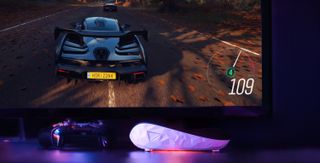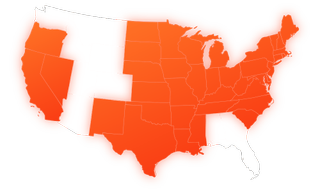Bring your own games to a virtual PC with this cloud gaming platform
While everyone was still talking about Google Stadia at E3, Shadow quietly showed off its own game streaming service.

While Google Stadia gets most of the attention these days, it's not the only cloud-gaming platform out there. At E3, I had the chance to check out Shadow, a four-year-old cloud gaming service that's a bit like renting a high-end gaming PC.
Unlike Stadia, which will start as a subscription-based cloud gaming platform that doubles as a digital storefront, Shadow charges a monthly fee of $34.95 (or $24.95 if billed annually) to access a virtual gaming PC. That's a huge jump from Stadia's $9.99 monthly subscription fee, but having your own virtual PC means you can put whatever you want on it—be it games or other programs like Photoshop. Google won't let you play the games you purchase via Stadia on another platform, but Shadow—like the possibly-defunct LiquidSky cloud gaming service—allows you to install any PC game launcher like Steam, and the games you own on it, to your Shadow PC. Shadow adapts to you, not the other way around.

That's all well and good, but how does Shadow run? When I tested Shadow at E3, the cloud was running from a local server in the room at 70Mbps download. Since Shadow has you playing on a virtual PC, I was able to mess around with the graphics settings on Metro Exodus and Battlefield V to see how far I could push the cloud before latency got me killed.
Latency didn't get me killed, actually. (That was my terrible tank-driving skills in Battlefield V.) Of course, with ray tracing and ultra graphics turned on, there was a slight, noticeable dip in the frame rate in both games, but I expected that since I bumped the graphics settings to the max. The framerate was still smoother than I anticipated, which I assume is due to the 70Mbps download speed and the server being in the room combined with the high-end hardware components. Of course, I wouldn't expect much latency with this kind of ideal gaming environment; the further away from a data center you are, the further performance will decrease.

It's still better than our hands-on time with Stadia at GDC, which was running on a simulated network environment of 1080p, 60fps, and 20Mbps. As Jarred pointed out, the simulation injected around 83ms of extra latency into the game to give the most realistic sense of what it would be like playing a single player game at 20Mbps download. In short, it's super choppy. I asked Adam Kahn, head of communications at Shadow, what minimum Mbps is Shadow capable of running. He said that Shadow can run at 5Mbps, but obviously the experience won't be great. A minimum of 15Mbps would be best to start with.
Obviously, that's not a problem if your internet has 100Mbps download, but according to one study, the mean download speed in the USA is around 25Mbps. In France, where Shadow started before expanding its network to the USA, the mean is around 24Mbps. While I am in the process of testing Shadow under various internet conditions, and on different desktops and laptops, I expect my experience with Shadow to be similar to Nvidia GeForce Now: surprisingly good with single player games, but often unplayable with online multiplayer. We'll see if my assumptions are correct.
The biggest gaming news, reviews and hardware deals
Keep up to date with the most important stories and the best deals, as picked by the PC Gamer team.
Most Popular


